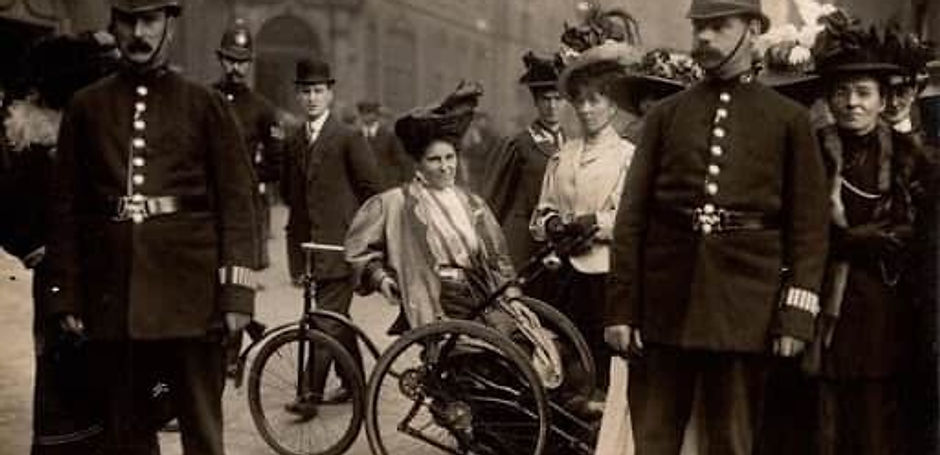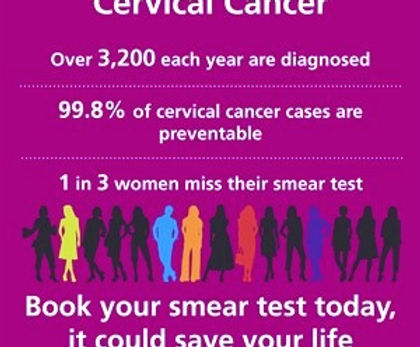
HEALTH, DISABILITY & OUR SEX-BASED RIGHTS
“I feel that the present government is not acting in accordance with the first principles of Liberalism, by refusing the right of representation to women taxpayers." - Rosa May Billinghurst
Section One
What does self ID mean for women with additional support needs or women who need to access health care services?
In law, women and girls are currently entitled to the following to ensure our privacy, dignity and safety when accessing healthcare:
Our right to ask for female personal care givers.
Our right to ask for a female nurse or doctor to carry out intimate procedures, including but not limited to; smears, sexual health exams, rape suite staff, mammograms, midwives, gynaecologists.
The right to expect single sex psychiatric wards.
Our right to ask for or expect single sex hospital wards where women are often in partial undress, vulnerable or sleeping.
But many women are comfortable with males doing their personal care, intimate examinations and sharing their sleeping spaces. If they are fine, then what is the problem?..
In short, it’s not fine for everyone.
Studies show that 50% of women prefer female doctors, nurses and caregivers. Fact check.
But further than this, if we lose our legal right to sex exemptions as described, who is this an amplified problem for?
Women and girls who have experienced rape, sexual abuse and sexual exploitation. (31% of women have experienced sexual abuse in their child hood, 20% have experienced sexual abuse in adulthood). Fact check.
Women and girls who have experienced physical and emotional abuse.
Women and girls with body confidence issues.
Women and girls with learning disabilities.
Women and girls for reasons of faith or culture. Fact check.
Women and girls who access personal care, especially those who have PA’s in their homes.
Women who are particularly vulnerable to sexual exploitation and assault. Of all the demographics of women, women with disabilities are twice as likely to be victims of domestic abuse and sexual assault. Fact check.
Women and girls who are detained under section who cannot actively consent to who is in their accommodation. Women from BME communities are proportionately over represented in this group. Fact check.
Women and girls accessing abortion services.
Research by the Women’s Resource Centre found that the majority of women valued women-only services. These include medical services, mental health services, and sex exemptions used to employ female therapists, doctors, nurses and caregivers etc.
In a survey of 1000 women:
97% said that women should have a choice of women only support services if they had been a victim of sexual assault.
90% believed that women should have the right to report sexual or domestic violence to a woman.
87% thought it was important to be able to see a female health professional about sexual or reproductive health matters
78% thought it was important to have the choice of a woman professional for counselling and personal support needs
A study of women only services commissioned by the Equality and Human Rights Commission found that for the majority of service users the women only aspect of the service was important in their decision to attend. Reasons for this included safety and security, building trust and confidence, peer support and the ability to talk freely about the issues facing them. These were particularly important for ethnic minority service users.
So what does the NHS and Government guidelines say on this?
Single-sex wards
The NHS in England and Wales is committed to the elimination of mixed sex wards:
“1.1 Overview Every patient has the right to receive high quality care that is safe and effective and respects their privacy and dignity. This is one of the guiding principles of the NHS Constitution and is at the core of local NHS visions. This Delivering Same-Sex Accommodation guidance updates and replaces previous guidance (PL/CNO/2009/2 and PL/CNO/2010/3) on requirements around recognising, reporting and eliminating breaches.
1.2 Guidance statement Providers of NHS-funded care are expected to have a zero-tolerance approach to mixed-sex accommodation, except where it is in the overall best interest of all patients affected.” - NHS Delivering same sex accomodation Sep 2019
However, this is directly undermined by the NHS already adopting the concept of sex self ID:
“• Trans people should be accommodated according to their presentation: the way they dress, and the name and pronouns they currently use. • This may not always accord with the physical sex appearance of the chest or genitalia.
• It does not depend on their having a gender recognition certificate (GRC) or legal name change” - NHS Delivering same sex accomodation Annex B Sep 2019
In short, the NHS misrepresents equality law.
Although Annex B correctly states that Gender Reassignment is a protected characteristic (Eq 2010), it is not the law that this legislation entitles that group to be treated as the opposite sex in all circumstances.
Sex exemptions allows for a single sex service (the exclusion of transwomen) if it is ‘proportionate to reaching a legitimate aim’. (See our legal page, currently being built). Moreover the technical guidance for the Public Sector Equality Duty states:
‘These legal obligation means that the impact on women must always be considered and cannot be ignored or trumped by the rights of transgender people’.
So as we can see, equality legislation is being misrepresented. Public bodies are embedding policies that go against the wishes and needs of women, and are in contravention of both the letter and the spirit of the law.
As the evidence WE have collated shows, services that do not reflect the wishes and needs of women impacts negatively on women and girls. Women self-exclude and unisex spaces are more stressful and dangerous for women and girls. The incidence of sexual assaults on mixed-sex wards is well documented here and here.
Our NHS has a duty to centre the safety and health of women, not endanger it via poor policy.
Sex self ID and our right to request female healthcare workers
WE believe that the legal right for women and girls to request a female healthcare provider must be upheld. Although there are reasonable clinical exceptions to this, women and girls must be able to trust that this request will be honoured. WE cannot accept a system where women self-exclude from essential healthcare services.
NHS Boards in Scotland confirmed that the NHS could not guarantee that a woman’s request for a female healthcare provider would be honoured, due to the fact that the provisions of the Gender Recognition Act 2004 prevented the disclosure of someone’s transgender status. Here. This concern is real amongst women. Here.
Worryingly, earlier this year, an official NHS training document cited an example of a letter where a breast cancer patient and child sexual abuse survivor was asking for a female nurse and doctor to do her mammogram as an example of ‘transphobia’. Here and here.
The patient in question has an MBE for services to the LGBT community. Here.
It is a shameful that a woman, clarifying and exercising her legal rights has been framed in such a way by our NHS.
Although the NHS trust in question did retract this training document (here), WE are not reassured. This only came to light via a whistleblowing process. It is deeply concerning that those producing, signing off, and delivering the training felt this was appropriate.
In addition, the policy of allowing staff to sex self ID at this NHS trust remains in place, undermining our legal right to request female practitioners. Although they apologised for their training document, their staff policies indicate they have not taken on board the needs of women and especially survivors.
It also, sadly demonstrates how the needs of women and girls are being ignored and misrepresented in a top-down push for sex self ID in frontline services.
WE believe in women's full bodily autonomy. This means that every woman and girl has a right to consent to who sees and touches their body.
WE must clarify policy and bring it back in line with legislation. WE must embed respect for women and girls needs into all areas of health policy.
SECTION 2
WEP Health Policy & will self-ID impact it?


